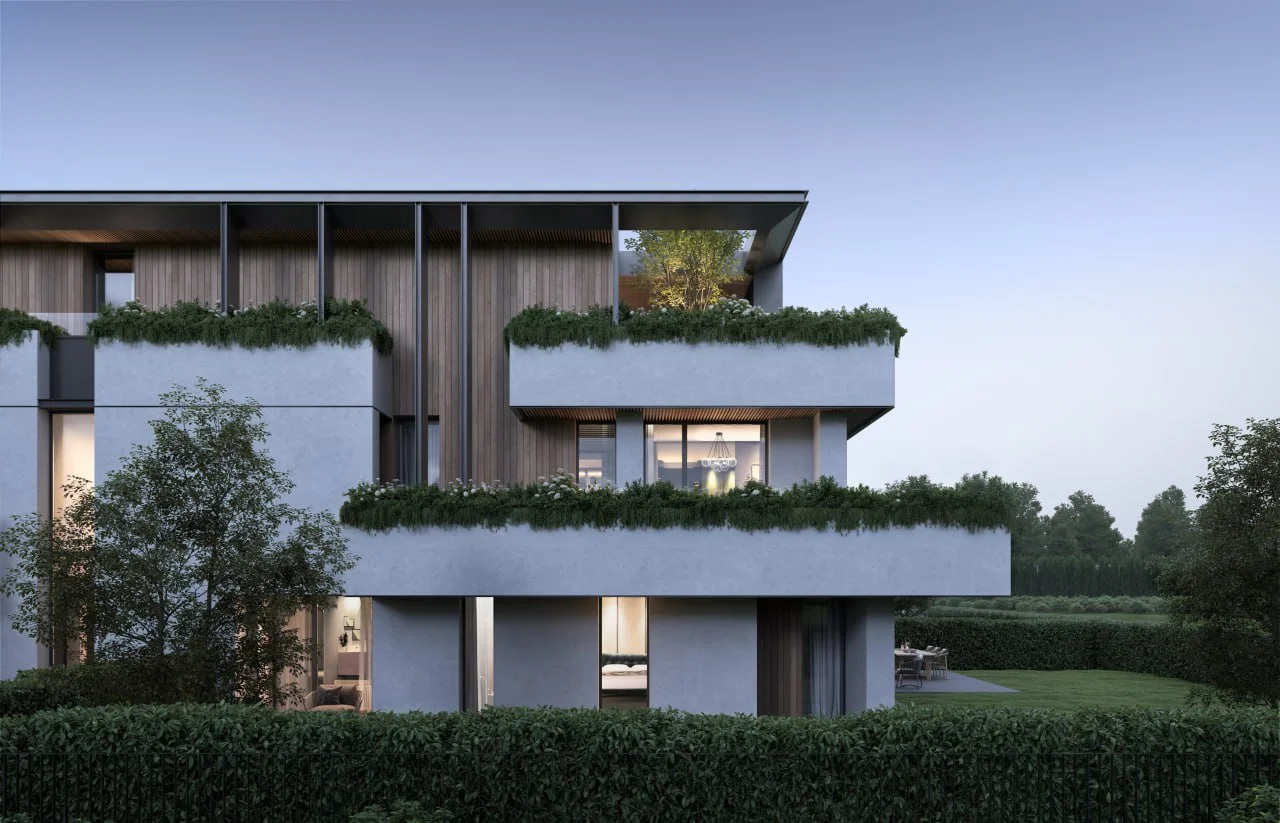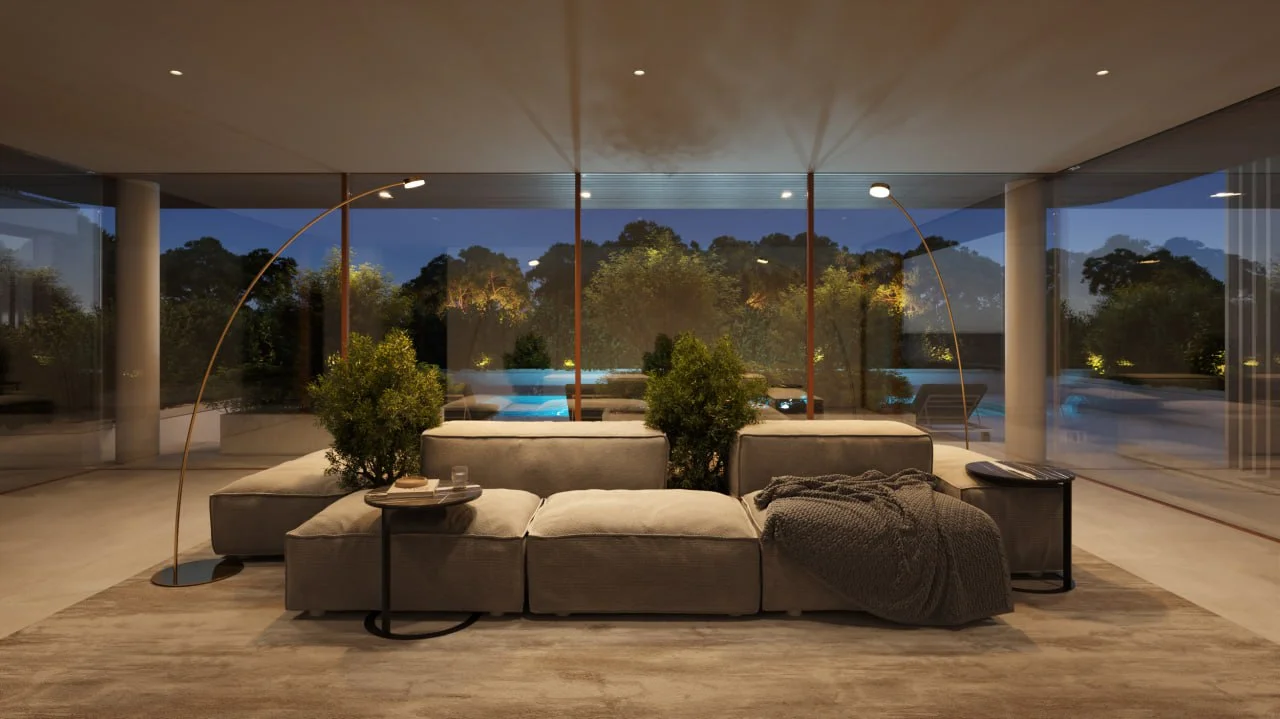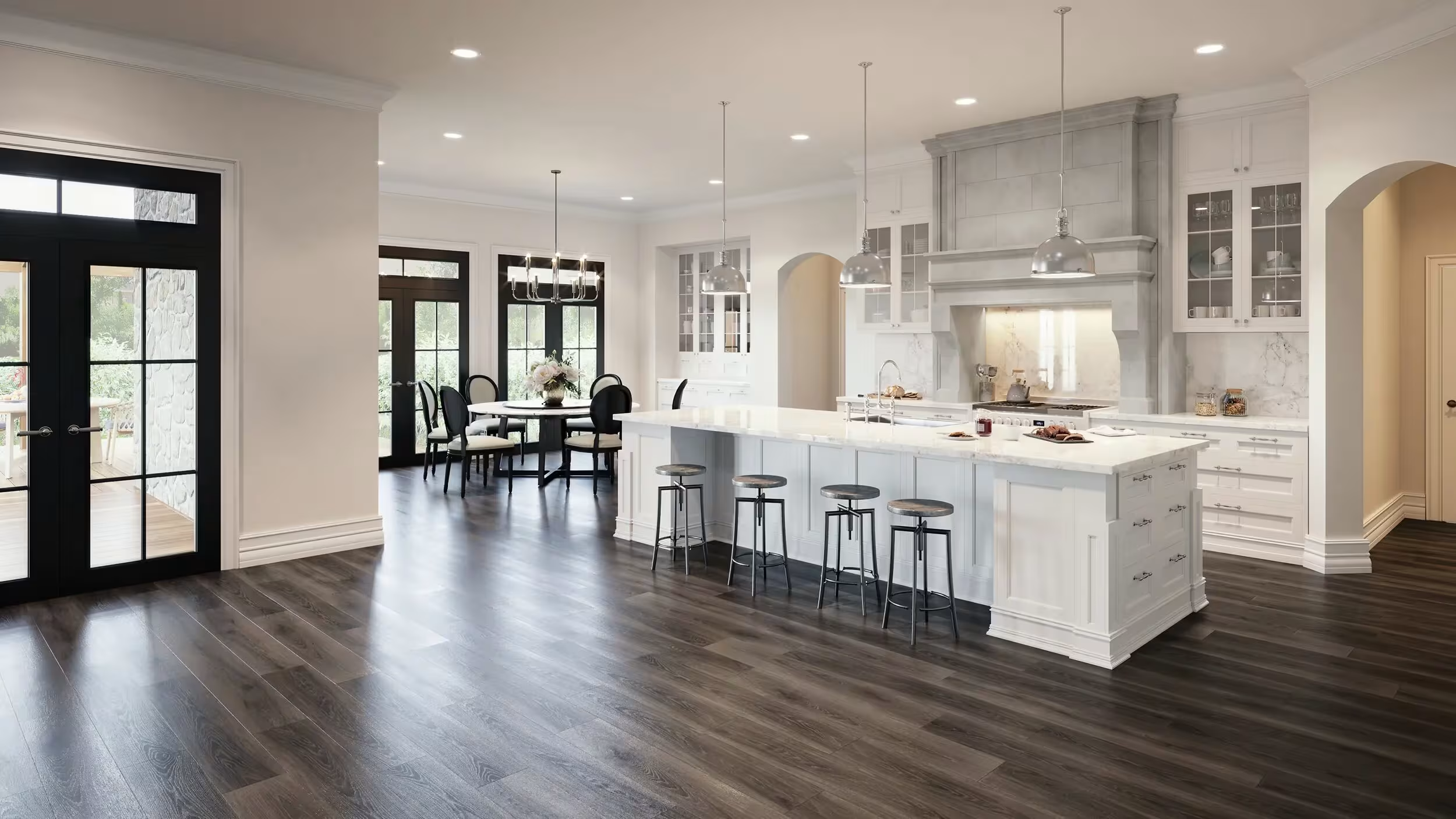In today’s competitive property market, standing out is no longer optional—it’s essential. Modern buyers expect more than static photos or floor plans; they want to explore, experience, and connect with a property before ever stepping inside. This is where 3D virtual tours for real estate redefine the way agents and developers showcase listings.
In this article, we’ll explore how these cutting-edge tools transform real estate marketing—unlocking new ways to present properties, engage clients, and drive results.
What Are 3D Virtual Tours for Real Estate?

A 3D virtual tour is an interactive, digital walkthrough that enables potential buyers or investors to explore a property from any location. It provides a lifelike, 360-degree view of every room and corner, offering a true sense of space, proportion, and design.
Unlike traditional marketing materials, these tours combine real estate visualization and 3D modeling technology to recreate a property with photorealistic precision.
For real estate and architecture professionals, this technology bridges the gap between concept and reality—making it easier to present ideas, attract attention, and convert interest into sales.
Key Benefits of 3D Virtual Tours for Real Estate Marketing

1. Enhanced Property Visibility and Reach
The power of 3D visualization for real estate lies in its accessibility. A 3D virtual tour allows agents and developers to showcase properties 24/7, reaching a global audience without geographical limits. Whether your target market is local buyers or international investors, virtual tours make every project visible anywhere, anytime.
Unlike photos or videos that present fixed perspectives, 3D virtual tours real estate solutions let viewers control their experience. They can explore freely, zoom in on details, or move between spaces—creating a personalized exploration that keeps them engaged longer.
2. Increased Buyer Engagement and Interest
Interactive tours drive deeper emotional and visual engagement. When potential buyers can virtually “walk through” a property, they connect with it on a more personal level. They can visualize themselves living there—standing in the kitchen, relaxing in the living room, or admiring the view from the balcony.
This interactive approach not only boosts engagement but also enhances the credibility of listings. High-quality real estate 3D tours signal professionalism and transparency—qualities that build trust between agents and clients.
For luxury real estate marketing materials, 3D tours elevate the brand experience even further. They allow premium properties to be presented in a way that feels exclusive and immersive, appealing directly to discerning buyers.
3. Time and Cost-Saving for Agents and Clients
Efficiency is one of the greatest advantages of using 3D virtual tours for real estate. Instead of scheduling multiple on-site visits, agents can provide clients with virtual access to several properties in minutes. This saves valuable time for both parties—particularly for international buyers who can explore remotely.
Moreover, 3D tours reduce the need for printed real estate marketing materials and minimize the number of physical showings required before closing a deal. This makes them a cost-effective real estate marketing product for agencies of all sizes.
4. Maximize Marketing Impact
Incorporating 3D visualization into your strategy is a powerful way to boost overall marketing performance. Listings with 3D virtual tours consistently receive more views and longer engagement compared to those with only photos or videos.
For developers, architects, and agents, these real estate marketing solutions enhance presentation quality—helping properties stand out in crowded marketplaces. Combined with other real estate marketing tools like aerial photography, drone footage, and professional staging, 3D tours form the core of a compelling, modern marketing package.
When integrated across real estate marketing platforms such as websites, social media, and digital listings, they create a cohesive, high-impact brand presence that resonates with buyers.
5. Building Emotional Connections with Potential Buyers
Successful real estate marketing is not just about showing properties—it’s about storytelling. 3D virtual tours real estate technology allows agents to create experiences that evoke emotion and imagination.
By giving potential buyers control over their journey through the property, they feel connected to it as if it’s already theirs. This emotional link increases the likelihood of inquiries, viewings, and ultimately, purchases.
For luxury real estate marketing ideas, this is especially powerful: high-end buyers expect more than data—they expect emotion, experience, and vision. 3D tours deliver all three.
Real Estate Marketing Solutions: Types of Properties Best Suited for 3D Virtual Tours

In the competitive property market, 3D rendering real estate solutions have become essential for showcasing properties with accuracy and visual appeal. By turning architectural concepts into lifelike virtual environments, 3D rendering bridges the gap between imagination and reality.
1. Residential Properties
From modern apartments to luxury villas, 3D visualization real estate solutions make residential listings come alive. Homebuyers can virtually explore floor plans, finishes, and layouts, which helps them make informed decisions without multiple physical visits.
2. Commercial Properties
Commercial real estate visualization gives investors and tenants the ability to assess a space for functionality and potential. Whether it’s an office building, retail store, or restaurant, virtual tours highlight the property’s design and flow—essential factors in business planning.
3. Properties Under Construction or Renovation
Even before a project is completed, real estate 3D models can showcase the future design with remarkable detail. This makes it easier to attract investors, pre-sell units, or secure leases during early development stages.
By using 3D visualization for real estate, architects and developers can present ideas convincingly, reducing uncertainty and boosting confidence in the project.
Real Estate 3D Tour Features

1. Pop-up Informational Windows
These interactive elements add value by providing extra context. Viewers can click on specific features—like materials, appliances, or finishes—to see detailed descriptions. It’s an excellent way to combine real estate data visualization with engaging storytelling.
2. VR Compatibility
Virtual Reality (VR) integration takes immersion to the next level. When potential buyers use VR headsets, they can “step inside” the property for a fully realistic experience. This feature is particularly effective in luxury real estate marketing materials, where sensory engagement plays a vital role in decision-making.
3. Customization Options
Every real estate and architecture project has its unique aesthetic and purpose. 3D tours can be customized to reflect brand identity, target audience, and design preferences. From interactive hotspots to branded interfaces, customization turns a simple tour into a polished real estate marketing product.
4. Real-life Environment Integration
Modern 3D tours don’t just present interiors—they merge them with the actual surroundings. By incorporating realistic lighting, landscaping, and environmental elements, agents can showcase how the property fits within its location. This connection between architecture and context enhances realism and helps buyers imagine themselves in the space.
Using 3D Virtual Tours for Real Estate Marketing Platforms

1. Website Integration
Your website is the digital storefront of your business — the place where clients form their first impression. Integrating a 3D virtual tour directly into property listings can significantly enhance user engagement.
When visitors explore properties in an interactive, 360-degree environment, they spend more time on your website, increasing conversion rates and interest. This not only improves SEO rankings but also builds trust, as clients can see every corner of a real estate space in detail.
Modern real estate marketing platforms make integration simple, allowing smooth embedding of tours with minimal technical effort. The result? A professional, modern presentation that helps your listings stand out from competitors.
2. Social Media and Apps
Social media has become a vital part of real estate marketing solutions. Platforms like Facebook, Instagram, and LinkedIn offer excellent opportunities to attract attention — but static photos often get lost in the feed.
3D virtual tours, however, are highly shareable and captivating. By giving users an immersive virtual experience, you can stop the scroll and engage potential buyers more effectively. Embedding snippets or panoramic videos of a tour within social media posts or property apps creates curiosity and drives traffic to your website.
For luxury properties, this becomes an even more powerful strategy. Luxury real estate marketing materials such as interactive tours and virtual staging elevate the sense of exclusivity and sophistication, helping agents reach high-end clients worldwide.
3. Online Ads and Listings
Online property listings are one of the first places buyers start their search. Adding a 3D real estate tour to these listings gives agents a major competitive advantage. Instead of relying on static photos, users can virtually move from one room to another, exploring the property as if they were there in person.
In digital advertising, interactive elements always perform better. A 3D tour not only increases click-through rates but also helps potential buyers form an emotional connection to the property. It bridges the gap between online interest and physical visits, making your marketing campaigns far more effective.
Costs and Time Factors in 3D Virtual Tour Creation for Real Estate Marketing

Like any professional service, the cost of creating 3D virtual tours for real estate depends on several factors — from the project’s size to the desired level of detail and interactivity. Understanding these factors helps agents and developers plan their real estate marketing materials more effectively.
1. Price Influences
The main cost influences include:
– Property Size and Complexity. Larger or more complex spaces (like multi-story buildings or commercial areas) require more detailed 3D modeling and additional rendering time.
– Customization Options. Adding branded interfaces, floor plans, or real estate data visualization features will increase the price but also elevate professionalism.
– Level of Realism. High-end, photorealistic 3D visualization for real estate requires advanced rendering, lighting, and texturing techniques — especially important for luxury properties.
– Interactivity. Features such as clickable hotspots, pop-up information windows, or integrated booking forms make tours more engaging but add to production costs.
While prices vary, investing in high-quality 3D tours is a long-term asset. They serve as reusable real estate marketing products that can be showcased across multiple campaigns and platforms.
2. Time Frame for Creation
The time required to create a real estate 3D model and turn it into a virtual tour depends on the project scope.
– A small apartment or single-family home might take a few days.
– A large commercial or mixed-use project could take several weeks.
The timeline typically includes stages like 3D modeling, texturing, lighting setup, rendering, and integration. Revisions and client feedback can also influence the delivery time.
Still, the efficiency of modern rendering software and AI-powered real estate visualization tools allows for faster turnaround without compromising quality.
Future Trends in 3D Virtual Tours for Real Estate

Technology continues to redefine how we experience spaces. The future of 3D visualization for real estate will focus on more realistic, interactive, and data-driven experiences that transform the way properties are marketed and sold.
1. Advancements in Virtual Tour Technology
As rendering engines and VR tools evolve, virtual tours are becoming more immersive than ever. Soon, clients will be able to interact with virtual rooms in real time — changing wall colors, moving furniture, or visualizing different lighting conditions.
These upgrades will allow agents to create fully personalized experiences for potential buyers. With advanced motion tracking and 3D mapping, even large real estate and architecture projects can be showcased with cinematic precision.
Additionally, real estate architecture firms are integrating real-time rendering into their workflows, giving clients immediate visual feedback during design presentations.
2. Impact of AI on Real Estate Visualization
Artificial Intelligence is revolutionizing real estate visualization by automating complex tasks like rendering optimization, object recognition, and scene enhancement.
AI-driven tools can analyze market trends and buyer behavior to generate personalized virtual tours that cater to specific client preferences. For example, an AI model could automatically adjust a virtual tour to emphasize features like open-concept layouts, natural light, or smart-home systems — elements proven to attract more buyers.
This intersection of AI, 3D visualization real estate, and data analytics will define the next generation of real estate marketing platforms.
Why 3D Virtual Tours Are Essential for Real Estate Marketing Today

The real estate industry is more competitive than ever, and standing out requires more than just attractive listings. Buyers are increasingly seeking experiences, not just information.
A well-crafted 3D virtual tour transforms the property-buying journey from static observation to emotional connection. It helps potential buyers visualize themselves in the space, understand the project layout, and appreciate the design from every angle.
For agents, developers, and architects, 3D tours are not just marketing add-ons — they’re strategic real estate marketing solutions. They reduce unnecessary showings, attract qualified leads, and shorten decision-making time.
Whether you’re targeting first-time buyers or promoting high-end developments, 3D virtual tours real estate are a cornerstone of modern real estate marketing materials. They bring together the visual power of architecture, the precision of technology, and the emotion of storytelling — creating a truly engaging way to showcase properties.
Conclusion

As digital technology continues to evolve, 3D virtual tours for real estate are becoming the new standard for property marketing. They merge creativity, interactivity, and innovation — offering agents and developers the ultimate real estate marketing tool to captivate today’s audience.
From immersive websites to data-driven insights powered by AI, the future of real estate visualization is here — and it’s virtual.